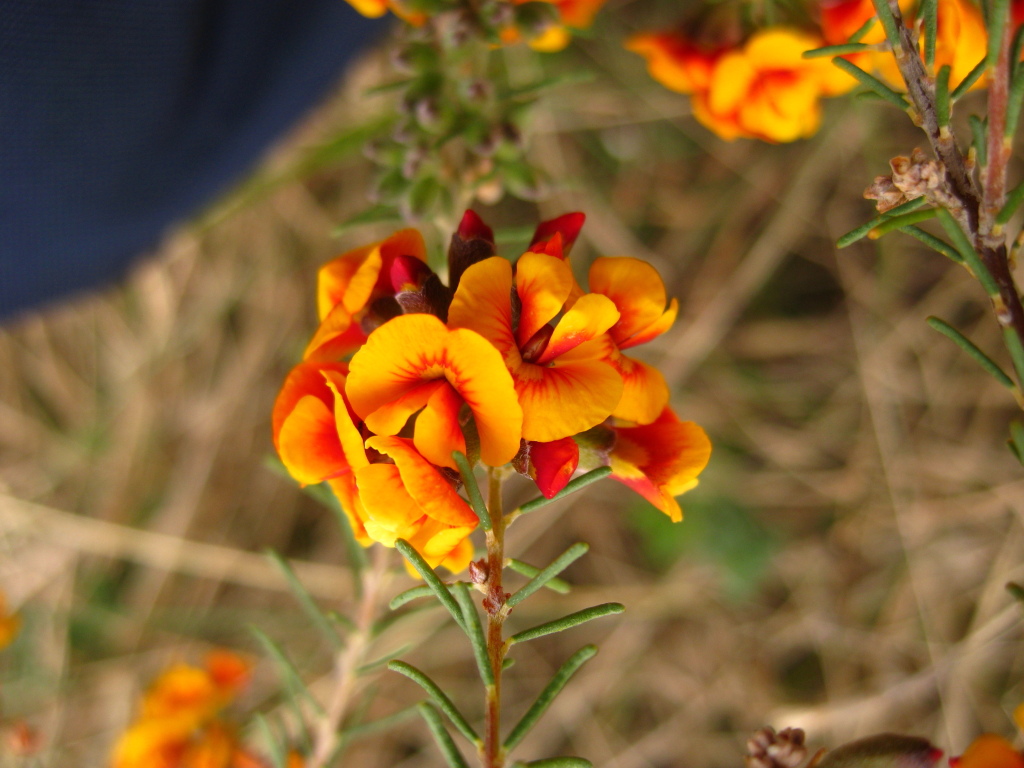Dillwynia cinerascens
R.Br. ex Sims Grey Parrot-peaErect, compact or decumbent shrub, 0.3–1(–1.5) m tall; stems appressed-pubescent. Leaves linear to filiform, 3–30 mm long, 0.3–0.5 mm wide, moderately crowded, glabrous or with sparse white hairs, acute, often shortly recurved near apex, minutely mucronate; petiole c. 0.5 mm long. Flowers 1–10, in subsessile, terminal and/or axillary, racemose or corymbose clusters; pedicel 0.5–3 mm long; bracts ovate, c. 1 mm long, acute, hairy, brown; bracteoles ovate-lanceolate, c. 1.5 mm long, hairy, remote from calyx. Calyx c. 4 mm long, sparsely to moderately hairy with usually asymmetrically medifixed hairs; petals mostly orange or yellow; standard 5–8 mm long, notched; wings shorter, narrow-obovate; keel shortest, obtuse. Pod ovate, c. 5 mm long, c. 3 mm wide, sessile, subacute, white-pubescent; seed usually 1, elliptic, c. 3 mm long, c. 1.5 mm wide; aril circular, off-centre. Flowers mostly Sep.–Nov.
Wim, GleP, Brid, VVP, VRiv, MuF, GipP, OtP, WaP, Gold, CVU, GGr, DunT, NIS, EGL, EGU, WPro, HSF, HNF, OtR, Strz, VAlp. Also WA, SA, NSW, Tas. Widespread across much of Victoria but sporadic in the far west and east. Grows mainly in sclerophyll forests and woodlands. An unusually tall (to 1.5 m high), glabrescent form occurs rarely along the Wimmera River near Horsham.
Jeanes, J.A. (1996). Fabaceae. In: Walsh, N.G.; Entwisle, T.J., Flora of Victoria Vol. 3, Dicotyledons Winteraceae to Myrtaceae, pp. 663–829. Inkata Press, Melbourne.
 Spinning
Spinning

